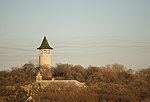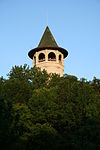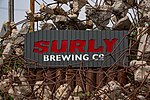Prospect Park station (Metro Transit)
2014 establishments in MinnesotaMetro Green Line (Minnesota) stations in MinneapolisMidwestern United States railway station stubsMinnesota building and structure stubsMinnesota transportation stubs ... and 1 more
Railway stations in the United States opened in 2014

Prospect Park (formerly named 29th Avenue) is a light rail station on the Green Line in Minneapolis, Minnesota. It is located on 29th Avenue just south of the University of Minnesota Transitway between 4th Street Southeast and University Avenue. It is located in the Prospect Park neighborhood of Minneapolis. Construction of the rail line along the transitway began in 2011, and station construction beginning in 2012. The station opened along with the rest of the line in 2014. Ridership at the station increased significantly after much of the surrounding land use was transformed from industrial to housing.
Excerpt from the Wikipedia article Prospect Park station (Metro Transit) (License: CC BY-SA 3.0, Authors, Images).Prospect Park station (Metro Transit)
Southeast 29th Avenue, Minneapolis
Geographical coordinates (GPS) Address External links Nearby Places Show on map
Geographical coordinates (GPS)
| Latitude | Longitude |
|---|---|
| N 44.971661111111 ° | E -93.215302777778 ° |
Address
Prospect Park
Southeast 29th Avenue
55414 Minneapolis
Minnesota, United States
Open on Google Maps








